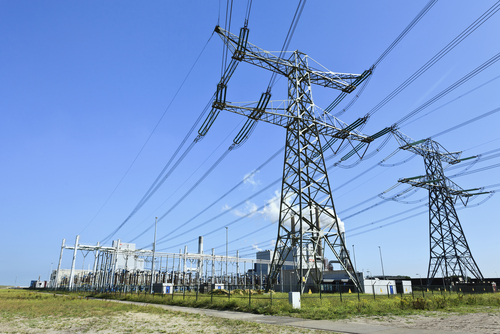AT&T AirGig To Use Power Lines For Ultrafast Broadband

Who needs fibre? Preparation for field trials in the US to deliver ultra fast broadband via electrical power lines
The delivery of ultrafast wireless broadband could potentially be delivered by electrical power lines.
AT&T Labs’ Project AirGig is currently in its experimentation phase, but the idea is that it could one day deliver low-cost, multi-gigabit wireless internet speed.
The concept of broadband via power lines has long been a pipedream of inventors, as it would negate the need for a costly install of fibre cables and instead make use of well established and widely implemented technology.
AT&T AirGig
 AT&T says that its AirGig technology would be easier to deploy than fibre, and would run over license-free spectrum and deliver ultra-fast wireless connectivity to any home or handheld wireless device.
AT&T says that its AirGig technology would be easier to deploy than fibre, and would run over license-free spectrum and deliver ultra-fast wireless connectivity to any home or handheld wireless device.
The researchers said they have designed Project AirGig from the ground up to be both practical and transformational. Indeed, there are said to more than 100 patents or patent applications stemming from this new technology.
It said that initial and ongoing testing at AT&T outdoor facilities has been positive, and it expects begin the first field trials in 2017.
“Project AirGig has tremendous potential to transform internet access globally – well beyond our current broadband footprint and not just in the United States,” said John Donovan, chief strategy officer and group president, Technology and Operations, AT&T. “The results we’ve seen from our outdoor labs testing have been encouraging, especially as you think about where we’re heading in a 5G world. To that end, we’re looking at the right global location to trial this new technology next year.”
Researchers said that they have been experimenting with multiple ways to send a modulated radio signal around or near medium-voltage power lines. It seems that no direct electrical connection to the power line is required and it has the potential of multi-gigabit speeds in urban, rural and underserved parts of the world.
The team has even invented “low-cost plastic antennas and devices located along the power line to regenerate millimetre wave (mmWave) signals that can be used for 4G LTE and 5G multi-gigabit mobile and fixed deployments.” This translates to low equipment and deployment costs, whilst maintaining a high signal quality.
“We think we’ve come up with an approach that we believe will be unique in our industry,” said the firm.
“We believe Project AirGig has the potential to quickly bring connectivity to all parts of the world. Our researchers are addressing the challenges that hampered similar approaches a decade ago, such as megabit per second speeds and high deployment costs,” said Donovan. “Project AirGig is still very much in the experimentation phase. That said, I’m excited about what AT&T Labs’ engineers have developed to date.
Long Time Coming
 As mentioned before, the idea of using power lines to provide Internet access is not a new one.
As mentioned before, the idea of using power lines to provide Internet access is not a new one.
Back in 2011, more than 1,000 homes in Liverpool took part in a trial using smart metering technology to deliver broadband Internet access.
Power line-based broadband, also known as Powerline Digital Scubscriber Line (PDSL) delivers data networking as a high frequency signal sent over the electric grid, instead of using telephone cables or fibre-optics.
Virgin Media took a different route when in 2010, it began rolling out superfast broadband via a fibre cable that ran across power poles. It did this mostly in rural areas in Wales.
What do you know about fibre broadband? Take our quiz!